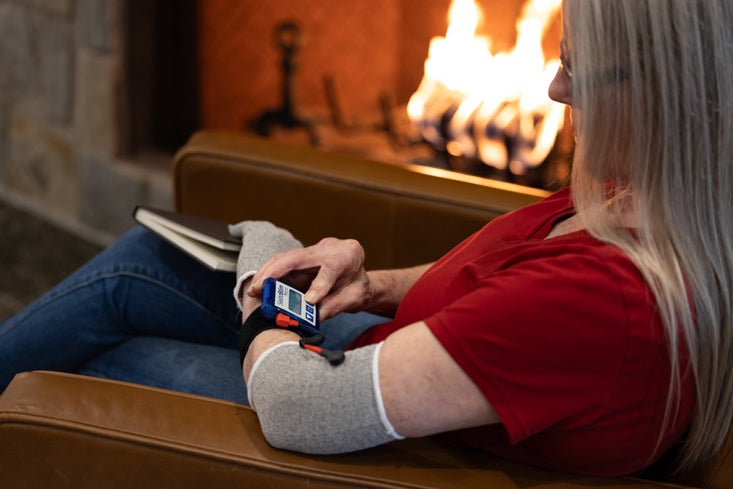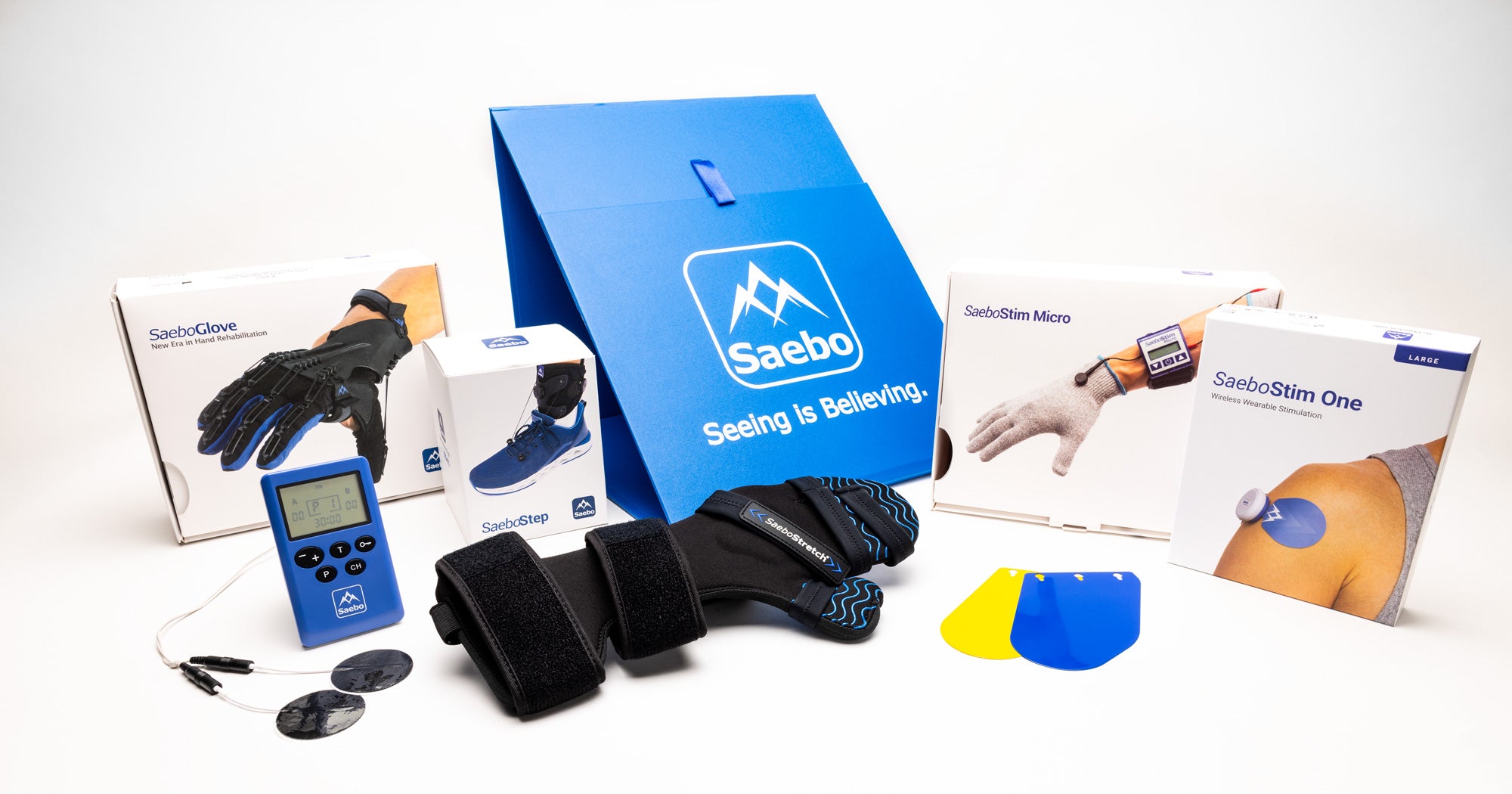
What Is the Relationship Between Stroke and Pneumonia?

Functional deficits and motor impairments are common following a stroke. Up to 90 percent of stroke survivors will experience some measure of paralysis or motor deficiency. There are more than 30 muscles involved in the swallowing process and about half of stroke patients suffer from difficulties while swallowing, or dysphagia. It’s important to remember that dysphagia is often temporary for most stroke survivors and this condition will improve for many stroke survivors over time. However, even temporary dysphagia can have dire consequences for stroke survivors and their loved ones leading to a host of complications including pneumonia. Today, one in three stroke survivors will develop pneumonia. Fortunately, there are many strategies ranging from basic lifestyle adjustments to neuromuscular stimulation that can help prevent this potentially life-threatening pulmonary condition.
What Is a Stroke Survivor’s Risk of Pneumonia?
Although the exact underlying cause of stroke-related dysphagia is not fully understood, difficulty swallowing is associated with damage to the brain stem or lesions resulting from a stroke. The muscles involved in swallowing are represented on both sides of the brain, however, and recent analysis has determined this hemispheric distribution is asymmetric in nature, leading “to the hypothesis that some subjects have a “‘dominant’ swallowing hemisphere,” according to a study in the Postgraduate Research Journal. It is supposed, then, that individuals who have suffered a stroke in their dominant swallowing hemisphere may be at an increased risk of being affected by dysphagia. Common dysphagia symptoms include: difficulty swallowing, weak voice, gag reflex loss, drooling, diminished tongue control, choking and coughing while consuming foods and liquids, etc. In general, dysphagia often leads to difficulty while eating, drinking, breathing, and taking medications.

Typically, if foreign objects (solid or liquid) enter the airway, this will initiate an involuntary cough to prevent these materials from entering the lungs. Dysphagia often reduces these sensations and a stroke patient may not cough as a response, resulting in those foreign objects entering the lungs, or aspiration. If a survivor is unaware of this aspiration and does not cough, this is known as silent aspiration. Sadly, nearly half of stroke survivors suffer from silent aspiration and one-third of all stroke survivors eventually develop pneumonia.
Dysphagia can also hinder a survivor’s food and water intake, resulting in malnutrition and also dehydration. In some cases, a feeding tube may be used to safely provide hydration and nourishment for patients to help meet nutritional needs. While this feeding tube may help with nutritional needs, it’s been speculated that a nasogastric tube can increase the risk of other types of pneumonia through pathogenic bacteria colonisation, according to a recent research study.
What Can Be Done About Stroke-Related Pneumonia?
Occupational therapists, physical therapists, speech-language pathologists, nutritionists, and other rehabilitation professionals will play an integral role in the stroke recovery and rehabilitation process for those struggling with dysphagia. After suffering a stroke, survivors should be screened for dysphagia prior to oral consumption of food, drink, or medications. A screening can help minimize aspiration risks and give the overseeing medical team a better understanding of the next treatment strategies to implement.
Trained medical staff may utilize the water swallow test or a videofluorographic examination to assess swallowing difficulty and risks. Then, if necessary, alternate feeding strategies and treatment can be prescribed. Following this initial screening, a speech-language pathologist will perform a series of assessments to test for aspiration. The speech-language pathologist evaluates chewing and swallowing muscle functions, asks questions to gauge a patient’s cognitive abilities, and also may simply listen to a patient’s speech to assess voice box function. These tests will enable the speech-language pathologist to design a rehabilitation program for the patient’s specific needs and current limitations.
The speech-language pathologist will guide the survivor through a series of exercises to help improve swallowing, strength, control, and coordination. These therapies are designed to account for functional loss as a result of the stroke. Stimulation therapy, a common dysphagia treatment, is often used to help increase swallowing speed and enhance sensitivity. This stimulation can encourage neuroplasticity, the brain’s ability to rewire itself after stroke in order to regain lost or impaired function.
There are also many lifestyle strategies that can help with dysphagia and prevent aspiration. For example, survivors should try to turn their head to the side or tuck their chin while eating and drinking -- this has shown to improve airway protection while swallowing foods and liquids. It may also be beneficial for survivors to take smaller bites of food and smaller sips of water. Thicker foods with an even consistency may be easier to chew and changing one’s diet to include such dietary options may be beneficial. A nutritionist or dietician can help with this. Similarly, liquid thickeners may be suggested to help with swallowing water. Survivors should remember to sit upright while eating or drinking and also take their time to ensure their food is chewed properly and swallowed slowly.
Pneumonia Is a Common Stroke Complication, But It Doesn’t Have to Happen To You!
Around the globe, 15 million people suffer a stroke every year and approximately half of all acute stroke survivors will experience dysphagia as a result. Unfortunately, this condition may increase an individual’s risk of developing aspiration pneumonia by nearly sevenfold. There are numerous strategies and lifestyle adjustments that can help survivors cope with dysphagia, maintain a balanced diet, and decrease their risk of developing pneumonia. Every stroke is different and similarly every stroke recovery plan should be designed around each patient for optimal results. Today, it is possible to increase an stroke survivor’s overall quality of life and prevent complications such as pneumonia with a sound, proactive, and individually tailored rehabilitation regimen. Here at Saebo, we are committed to stroke support and recovery for all survivors and their families. Saebo offers a wide range of products that combine cutting-edge technology with evidence-based rehabilitation techniques. Our offerings and network of Saebo-trained therapists can help you or a loved one to obtain all the necessary tools to maximize stroke recovery.
All content provided on this blog is for informational purposes only and is not intended to be a substitute for professional medical advice, diagnosis, or treatment. Always seek the advice of your physician or other qualified health provider with any questions you may have regarding a medical condition. If you think you may have a medical emergency, call your doctor or 911 immediately. Reliance on any information provided by the Saebo website is solely at your own risk.
All content provided on this blog is for informational purposes only and is not intended to be a substitute for professional medical advice, diagnosis, or treatment. Always seek the advice of your physician or other qualified health providers with any questions you may have regarding a medical condition. If you think you may have a medical emergency, call your doctor or 911 immediately. Reliance on any information provided by the Saebo website is solely at your own risk.



